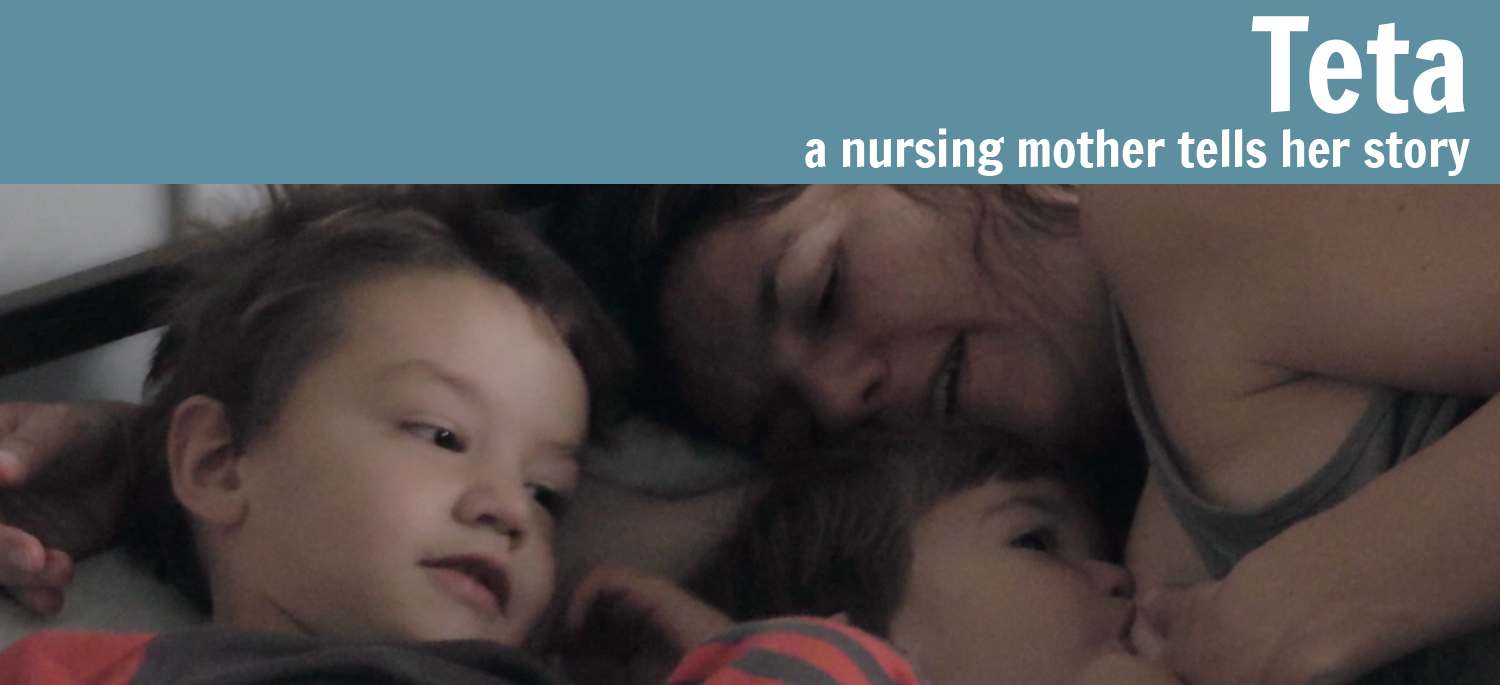A Documentary (and a baby) are born
My first son William was born after a long labor that resulted in a C-section. The whole process is hazy now but I recall how the pro-nursing books I’d read kept going through my head with their warning that babies born through C-sections had a hard time latching and sustaining a nursing practice. As the C-section became the only viable option, I feared that my long-held dream of nursing my children was slipping away. And yet, when they placed William in my arms—all 8.4 pounds of him—I gazed at his face for a few seconds and then instinctively brought him to my breast. The relief I felt when he latched still reverberates through me. It was perhaps because I felt so fortunate to be able to nurse him in spite of what I’d read that I kept asking my husband Nate to film our nursing sessions.
As I edited our home videos, I realized that unlike the footage of us playing with William, which recalled film and TV scenes I’d watched growing up, I’d hardly ever seen nursing represented onscreen either here in the States or in Venezuela, my home country, where I lived until I was 16. The experience of nursing felt absolute to me—vital to who William was as a baby and to the adult he would become, as well as to my own identity, which for me was redefined through the experience. And yet, nursing was absent from most of our cultural representations of what it’s like to be a mother and what it’s like to be a child. When I became pregnant with my second child, Santiago, I decided to take the story of my experience nursing him beyond our family circle.
I was 13 when my first brother was born and 19 when the second came into the world. Because of the age difference between us I had the joy of watching my mother nurse both boys and to dream of the days when I, too, would have a baby at my breast. From my mother I learned how profound the experience can be, as well as the intricate dance a woman must constantly perform when balancing nursing and her professional life. Like my mother before me, I took my children to work with me and nursed them through countless meetings and work-related events. I wanted this film to show that aspect of the nursing experience because if there is little representation of women nursing in mainstream media, images of women nursing at work are so rare that employers may not even imagine the possibility of welcoming babies into work spaces. And yet, a nursing baby—as Teta shows—can be an unobtrusive part of a variety of work experiences. From my mother, I also learned to nurse in public with no sense of guilt or compunction. Just as I hope to invite a conversation about nursing in the workplace with this film, I also hope it will join the already vibrant movement toward normalizing nursing in public.
I worked on filming and editing this documentary over 22 months, and as I looked through the footage and shared unfinished drafts with Nate and with friends, family, and colleagues, I realized that the story was more complex than me nursing Santiago. The documentary also captured the ways in which William reacted to the hours I spent with his brother in my arms by turning nursing sessions into moments when he, too, was very close to me and joined in the intimacy. Even from his place behind the camera, Nate’s role in supporting and marveling at the closeness developed by the nursing process became another thread of the documentary. Teta is the story of love transmitted through milk from mother to child, but also of family love grown around a nursing practice that has spanned generations in our case. Here’s to the generations that will come and to women who, as I type this, are beginning their own nursing journeys and bonding with their babies and family members in this transcendent practice.

